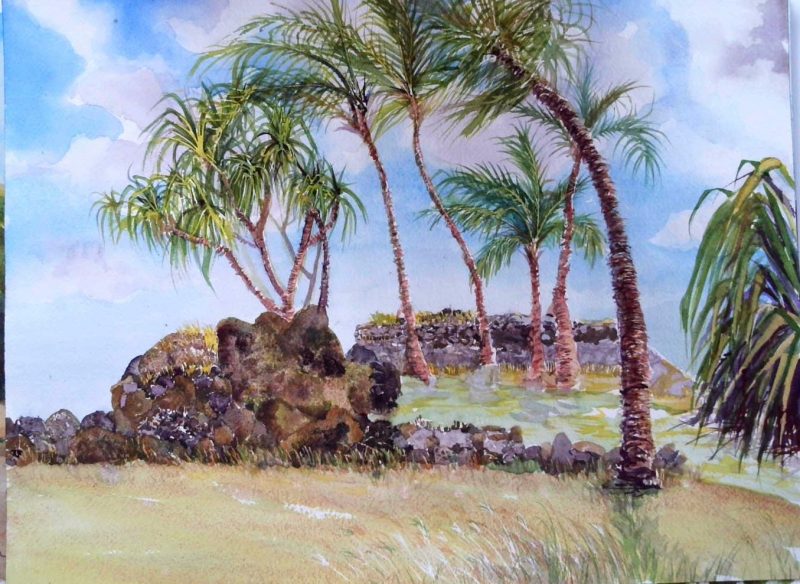This is the name for the place most people know as Pokaʻi Bay in Waiʻanae. However, if you are out on the west coast of Oʻahu, you will see light stone placemarkers of coral with the names of the places as they are known by the ʻohana of Waiʻanae. Malaea is an important wahipana named in chants of its reknown as a naval academy and transit center for wayfinders in the Pacific hundreds or even possibly thousands of years ago. Wahipana are storied places that have historical, cultural and spiritual significance, and I find, unique properties in itʻs landscape.
To see an earlier project I did to explore how wahipana could affect artistsʻ process, take a look at the website documentation of this project. I was curious, what would happen if artists were exposed to moʻolelo by those who knew a wahipana well? Would it affect their process or not?
The temple at the end of the point, an unu, was called Ku’ilioloa at Kāne’ilio point. Unu is the preferred name for the temples of these families. This temple has three platforms, to connect the people to Mother Earth and the sky and heavens. If you ask, you will hear various stories about the name, the templeʻs history, and use. The paintings in this series were done with intentional purpose and good intentions, so if you have another story, it doesnʻt mean one of us is ʻwrongʻ. I listened to the moʻolelo and walked the spaces with my guides and reflecting on their stories, returning to walk the space alone to receive the impression to guide me to the appropriate way to show this particular wahipana.
One of Kumu Kilaʻs favorite sayings: “All life is sacred under the sun” and listening to his and Christopher Olivieraʻs stories as we walked different wahipana over the past few years has been a good introduction to understanding more the value and treasure that Kānehūnāmoku is and the stories and people I have heard as a young person, but didnʻt understand back then.
The exhibit includes my watercolors and Jan Becketʻs cultural photography. He works in a similar process, he goes out with his cultural guides to wahipana that are sometimes open, sometimes hidden.




One story I love is how Kumu Kilaʻs tūtū fed the sharks at the entrance to the unu by chewing fish, bones and all and spitting it out, and hand feeding them so the ʻohana kept their connection to their amakua (ancestral protective spirits). My familyʻs bones are in Paia, Maui and whenever we go there, the beach is always filled with honu, sunning, sleeping, surfing. It is a comforting thought that our past, our present, and future are connected and we have a place in nature and a relationship with natureʻs creatures.